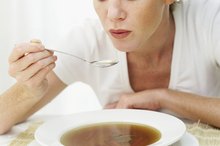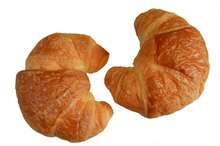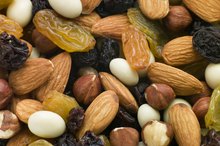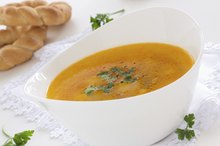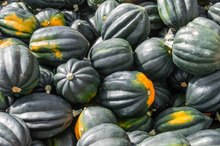What does fact checked mean?
At Healthfully, we strive to deliver objective content that is accurate and up-to-date. Our team periodically reviews articles in order to ensure content quality. The sources cited below consist of evidence from peer-reviewed journals, prominent medical organizations, academic associations, and government data.
The information contained on this site is for informational purposes only, and should not be used as a substitute for the advice of a professional health care provider. Please check with the appropriate physician regarding health questions and concerns. Although we strive to deliver accurate and up-to-date information, no guarantee to that effect is made.
What Foods Can I Eat on a Low-Fiber Diet?
Fiber is the indigestible part of foods such as vegetables, fruits and grains. You may need to follow a low-fiber diet if you have particular medical conditions, such as diarrhea, abdominal cramps, intestinal inflammation or inflammatory bowel disease, or when you are recovering from bowel surgery 2. A diet low in fiber limits the amount of undigested food traveling through your intestines, makes your stools smaller and reduces bowel irritation 2. A carefully planned low-fiber diet provides most nutrients required for good health, says the Ohio State University Medical Center 2.
Vegetables
Thoroughly cooked fresh or tinned vegetables are appropriate on a lower-fiber diet provided they contain no skins, stems or seeds. Choose from vegetables such as sweet or white potatoes, carrots, peppers and string beans. Pureed vegetables and vegetable juices are also allowed.
- Thoroughly cooked fresh or tinned vegetables are appropriate on a lower-fiber diet provided they contain no skins, stems or seeds.
Fruits
Soft Diet List After Bowel Surgery
Learn More
You can eat most tinned or cooked fruits on a low-fiber diet as long as they do not contain seeds, skins or membranes 2. Skinless raw fruit with no membranes or seeds and fruit juice without pulp are also permissible. Avoid dried fruits, oranges and grapefruit. Have no more than one or two 1/2-cup servings of fruits and vegetables daily while following a low-fiber diet, advises the Mayo Clinic 2.
Bread, Cereals and Grains
Ensure grain foods contain less than 2 g of dietary fiber per serving. Choose from cooked cereals such as cream of rice and strained oatmeal, and select dry cereals like puffed rice and cornflakes. Avoid foods made with whole grains, bran, brown rice and wild rice, says the Ohio State University Medical Center.
Meat, Poultry and Fish
Foods to Avoid on a High Fiber Diet
Learn More
Tender cuts of meat such as beef, pork and lamb are acceptable on a low-fiber diet, along with ground meat, poultry and fish 2.
Eggs and Dairy
Eggs can be eaten on a low-fiber diet as long as they are not fried 2. Dairy options include:
- low-fat or fat-free milk
- cream cheese
- cottage cheese
- mild American cheese
- yogurt
- ice cream
The Ohio State University Medical Center recommends avoiding yogurt or ice cream that contains berries, dried fruits or nuts.
Preventing Constipation
A diet low in fiber results in the formation of smaller stools and fewer bowel movements, which may cause constipation 2. Unless advised differently, drink lots of water to help prevent constipation.
Related Articles
References
Writer Bio
Based in southeast England, Sharon Kirby has been writing health-related articles since 2005. Her work has appeared in "Nursing Times" magazine, "Issues" magazine and The Online Journal of Sport Psychology. Kirby's education includes a Master of Science in sports science and a Bachelor of Science in psychology from Essex University.
